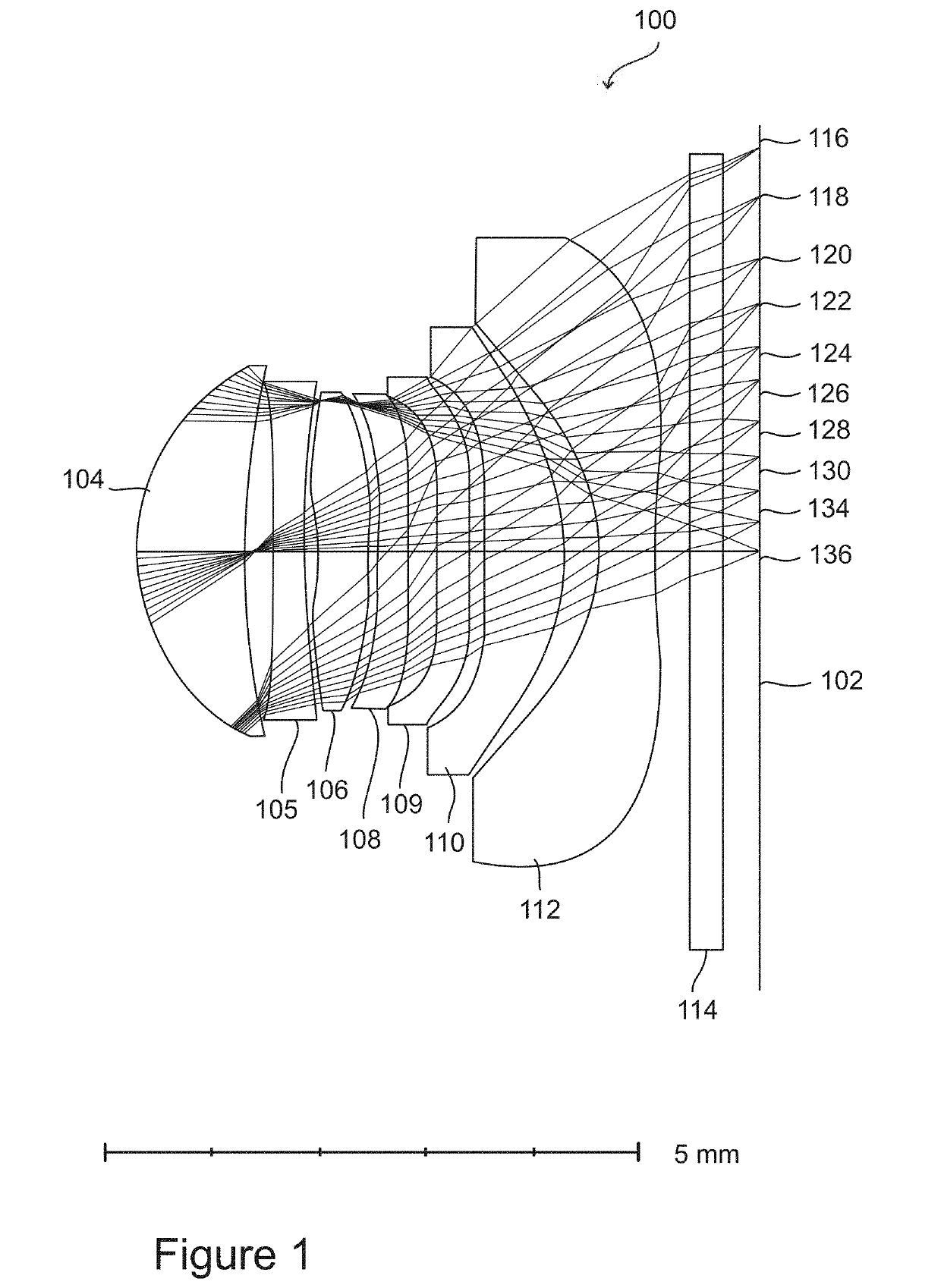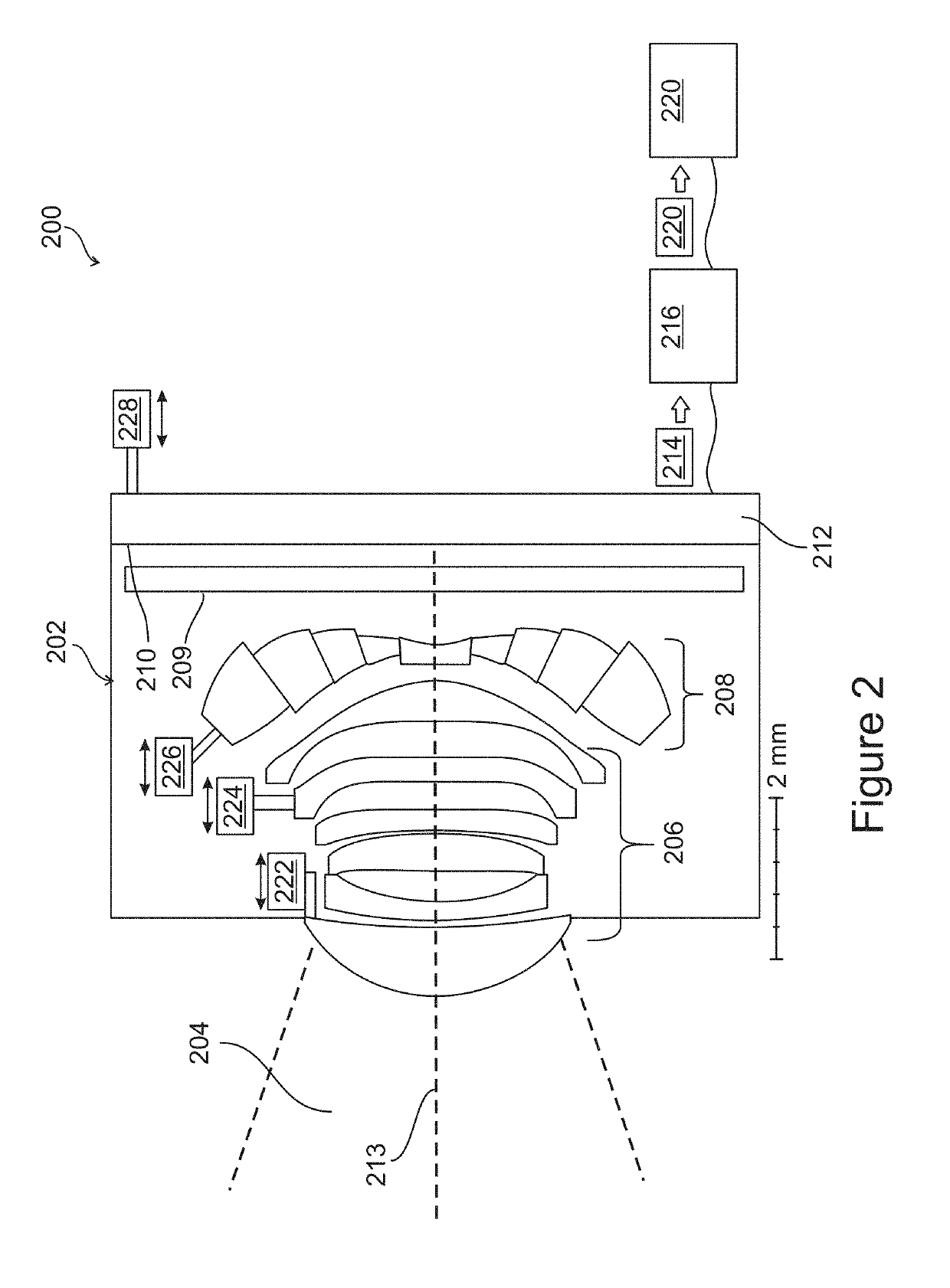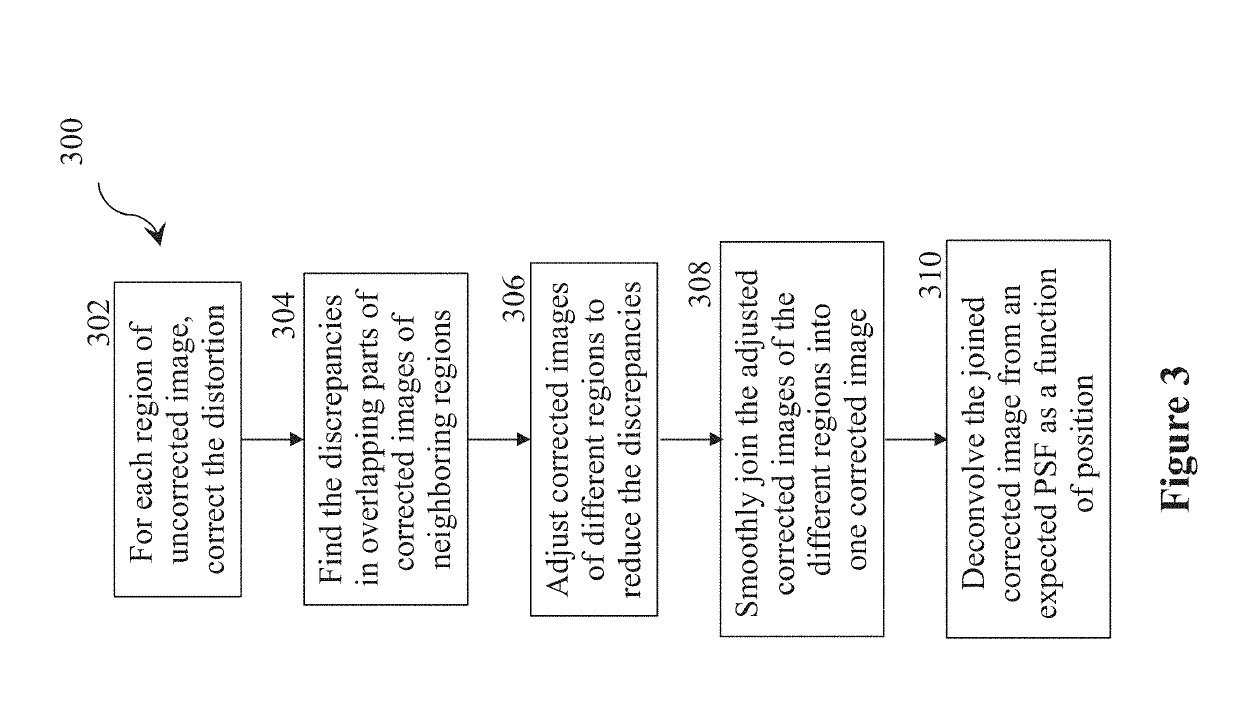Lens design with tolerance of fabrication errors
a technology of fabrication errors and lens design, applied in the field of optical system design, can solve the problems of difficult optimization of lens design, reduced quality of image produced by the camera, and high cost of cameras to manufacture, and achieve the effect of reducing or eliminating discontinuities in digital images
- Summary
- Abstract
- Description
- Claims
- Application Information
AI Technical Summary
Benefits of technology
Problems solved by technology
Method used
Image
Examples
examples
[0191]Reference is now made to the following examples, which together with the above descriptions illustrate some embodiments of the invention in a non limiting fashion.
[0192]An analysis was made of the sensitivity of image quality to manufacturing errors, for two designs for cell phone cameras. The first design is a conventional design, similar to that shown in FIG. 1, and the second design has a sectioned lens element, according to an exemplary embodiment of the invention, similar to the design show in FIG. 2, with a central circular section surrounded by four concentric annular sections. Both designs have a total track length (TTL) from the aperture to the sensor of 5.7 mm, both have an f / 1.4 aperture, both have a field of view that is 80 degrees wide, both have an image height of 7.8 mm, and both have a sensor array with sensor elements (pixels) spaced at a distance of 1.55 μm. A calculation was made of the degradation of image quality that would result from manufacturing errors...
PUM
 Login to View More
Login to View More Abstract
Description
Claims
Application Information
 Login to View More
Login to View More - R&D
- Intellectual Property
- Life Sciences
- Materials
- Tech Scout
- Unparalleled Data Quality
- Higher Quality Content
- 60% Fewer Hallucinations
Browse by: Latest US Patents, China's latest patents, Technical Efficacy Thesaurus, Application Domain, Technology Topic, Popular Technical Reports.
© 2025 PatSnap. All rights reserved.Legal|Privacy policy|Modern Slavery Act Transparency Statement|Sitemap|About US| Contact US: help@patsnap.com



